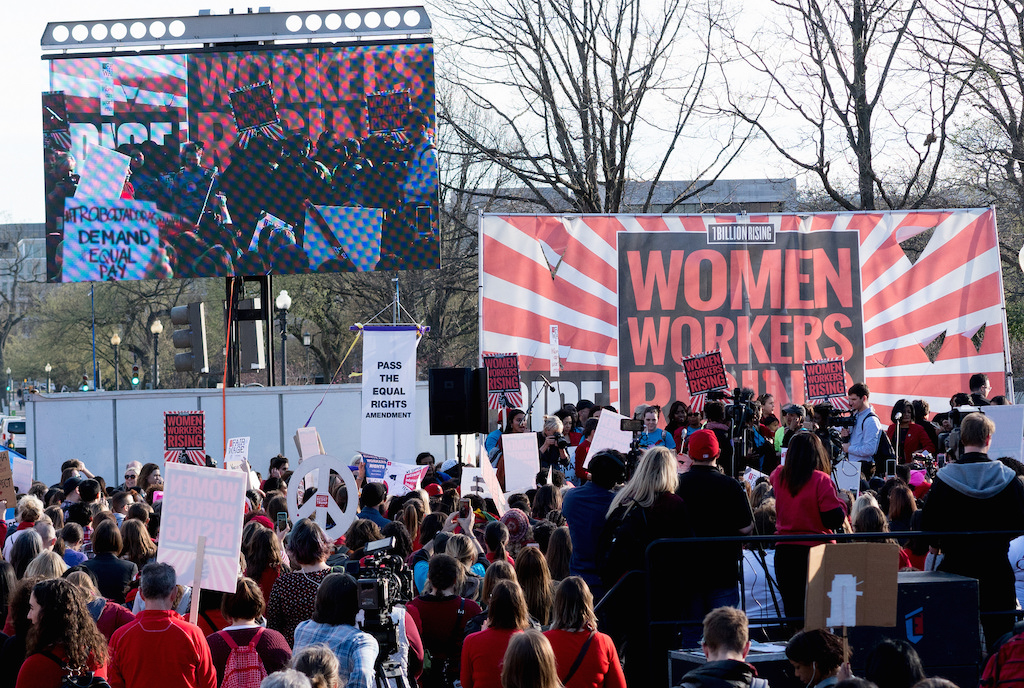The Canadian Labour Congress (CLC) elects a new secretary-treasurer at its convention this week. Barb Byers is retiring after three years in the role and decades as a union activist.
Many have praised Byers’ work: she’s a member of the Order of Canada, and the online Encyclopedia of Saskatchewan describes the former social worker as “one of the most influential women in the Saskatchewan and Canadian labour movement.” The accolades are deserved. When Byers was elected president of what is now the Saskatchewan Government and General Employees’ Union in 1984, she became the first woman president of a provincial government employees’ union in Canada. Her work to address sexism in the workplace laid the foundation for the CLC’s efforts to raise awareness about the impact of domestic violence on worker productivity.
Despite this kind of work, women still struggle for recognition in the workforce, and the labour movement.
Tiffany Balducci, an executive board member for CUPE Ontario, got involved in her union right away. On her second day of work at a public library, she attended a union meeting and heard about a vacancy on the executive. She volunteered to join. She “got brought into the fold” fairly quickly — something she acknowledged “isn’t always the case” in unions.
Union structures and hierarchies can be “hard to navigate,” said Balducci. Male and female colleagues supported her when she ran for leadership positions, but she has heard from women in other unions that they often struggle to get those roles. Most CUPE members are women. They work in fields like education, child care or health care — professions largely dominated by women. They see how lack of funds for these services negatively impact women more than they do men, said Balducci. But she sees more women than men attending large union events, she said. When women do speak, men often talk over them.
This may be different from systemic issues like violence in the workplace or pay inequality but “it all adds up,” said Balducci.
Byers, who called herself “an unengaged (union) member” before she got involved, said she also saw women struggle to achieve leadership positions, or have their opinions heard and respected.
“We do tend to be more collaborative,” Byers said, comparing the ways men and women typically lead. She’s seen men dismiss women’s contributions in meetings, or claim a woman’s idea as their own. Women are more likely to combine toughness with civility and decency, she said. Labour unions, like much of society, tend to encourage loud, aggressive leadership — something often seen displayed more by men. Many men are able to express themselves without being disrespectful, “but sometimes, our movement hasn’t had that history,” Byers said.
Women’s future success lies in collaboration — the very thing that helped Byers and Balducci.
“Never be afraid to question,” Byers said when asked how she would advise emerging female activists. “But always have sisters around you that can help you with support if you don’t get the response that you need.”
Balducci makes an effort to do the same, often sending younger members encouraging messages on social media when she hears about their achievements. She’s also educating members about what gender equality is and how to achieve it. Balducci facilitates union education courses about gender equality with both women and men. She often asks participants if they would consider themselves feminists. Few do. She then asks who believes women should have the same legal, social and economic rights as men. Everyone agrees with that.
She hopes this makes feminism “not a dirty word anymore.”
Balducci doesn’t get fazed when people say they never knew about the inequalities women face until taking her course.
“It really gives me hope because people are constantly learning.”
Meagan Gillmore is rabble’s labour reporter.
Photo: Victoria Pickering/flickr





